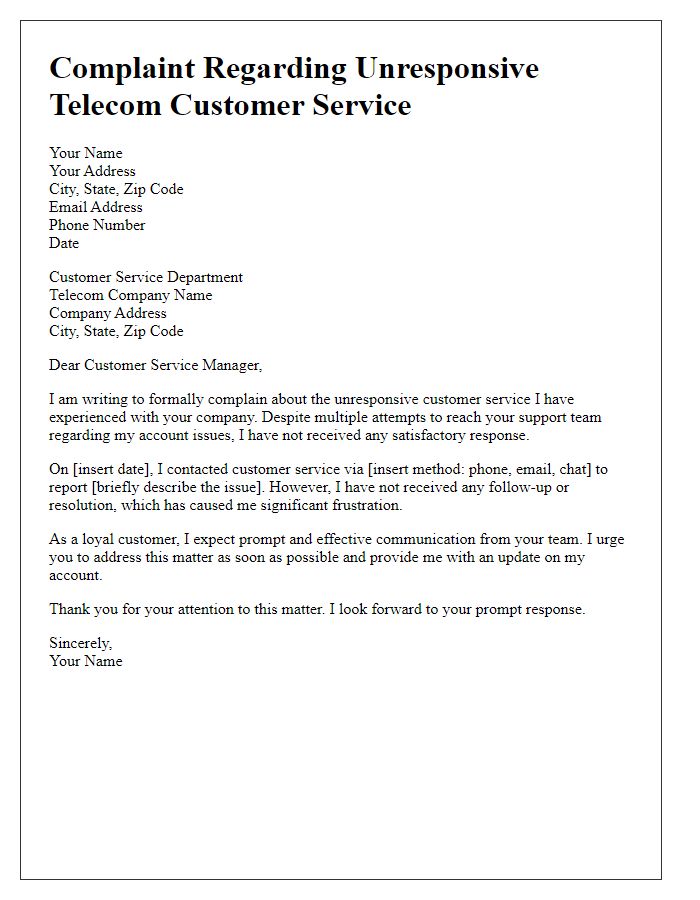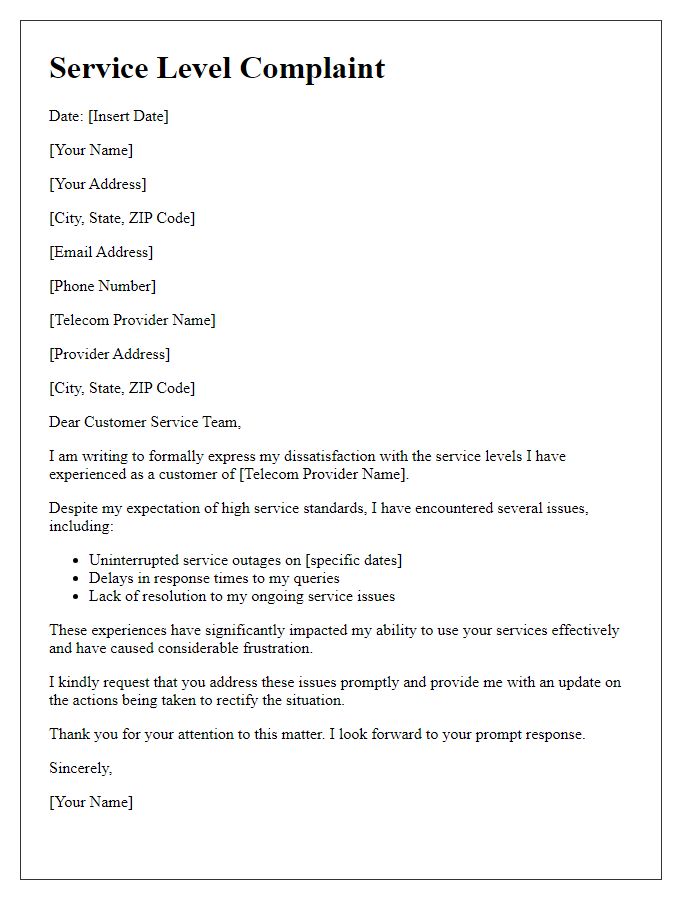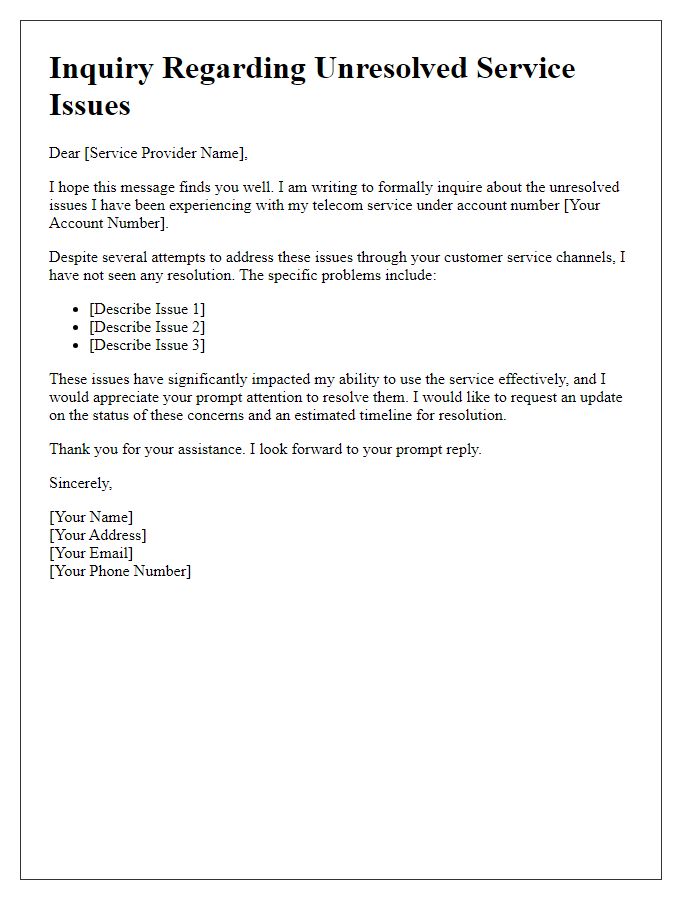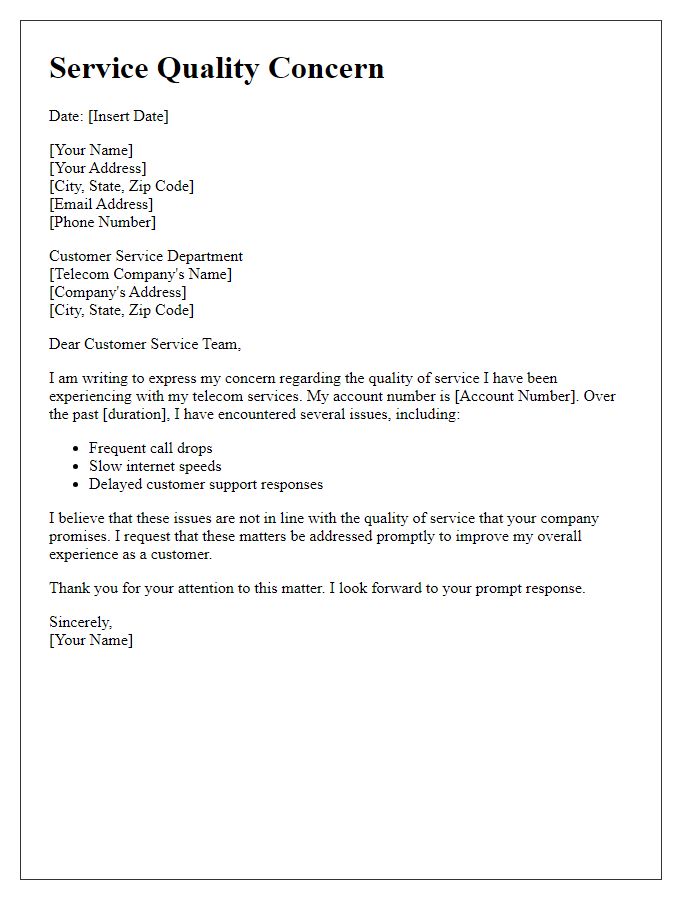Are you feeling frustrated with your telecom service? You're not aloneâmany of us have faced issues ranging from dropped calls to slow internet speeds. Writing a clear, formal complaint letter can be an effective way to resolve these problems. Stick around, as we'll provide you with a handy template to make your complaint heard!

Clear identification of the issue
Customers often experience prolonged outages in telecommunication services, impacting their connectivity and communication capabilities. For instance, in areas like downtown Chicago, residents reported service interruptions lasting over 12 hours during peak usage times. These disruptions can prevent access to emergency services, hinder remote work productivity, and disrupt daily activities. The lack of timely updates from customer service representatives often exacerbates frustration, with wait times exceeding 45 minutes in some cases. Moreover, issues related to billing inaccuracies, such as unexpected charges on monthly statements, further compound customer dissatisfaction. It is crucial for service providers to address these concerns effectively to improve overall user experience.
Relevant account and service details
Telecom service complaints often stem from issues like service outages or billing discrepancies. Account details, such as the unique account number (typically a 10 to 12-digit identifier) assigned to customers, are crucial for tracking problems. Service details may include the type of service (like broadband, mobile, or landline) and any associated plan name (like Unlimited Plan or Family Sharing Plan). Additionally, important dates, such as the date of service disruption or billing statement, help establish a timeline of events. Customer service interactions, such as call reference numbers or chat logs, provide documented evidence of attempts to resolve issues and should be included for clarity.
Impact on user experience and expectations
Telecom service interruptions and inconsistent connectivity can significantly impact user experience and expectations. Frequent dropped calls or slow internet speeds, often reported during peak hours between 6 PM and 9 PM, can frustrate customers. For instance, users in urban areas like New York City often experience signal degradation in densely populated zones. This issue not only affects basic communication but also hampers activities reliant on stable connections, such as video conferencing or online streaming. Customer service response times, often exceeding 30 minutes, can further exacerbate dissatisfaction, leading to diminished trust in service quality and reliability.
Request for resolution and timeline
Telecom service complaints often involve issues such as network outages, billing discrepancies, or service interruptions experienced by customers. These incidents can significantly affect user satisfaction and trust in services provided by companies like Verizon or AT&T. For example, a network outage lasting over 12 hours can lead to lost business opportunities for small business owners relying on consistent internet access. Prompt resolution and clear communication timelines are essential for restoring customer confidence. Additionally, industry regulations often stipulate that service providers must address complaints within a certain timeframe, typically 30 days, ensuring that consumers receive timely support. The lack of timely resolution can result in customer attrition, as dissatisfied clients may consider switching to competitors who promise better service reliability.
Contact information for follow-up
Telecom service complaints often arise from numerous issues, including poor connectivity, billing discrepancies, or inadequate customer support. For example, customers experiencing intermittent signal loss in urban areas like New York City may face frustration, especially if they rely on their mobile devices for work. Additionally, if a customer encounters unexpected charges on their monthly bill, such as surcharges exceeding $50, it can create confusion. Ensuring prompt follow-up requires providing accurate contact information, such as a direct phone number (e.g., +1-800-555-0199) or email (example@telcomservice.com) where customer service representatives can verify the complaint details and offer quick resolutions. Gathering customer account numbers (unique identifiers) can also expedite the follow-up process and minimize delays in addressing the service complaint.
Letter Template For Telecom Service Complaint Samples
Letter template of request for compensation due to telecom service failure

Letter template of complaint about unresponsive telecom customer service












Comments